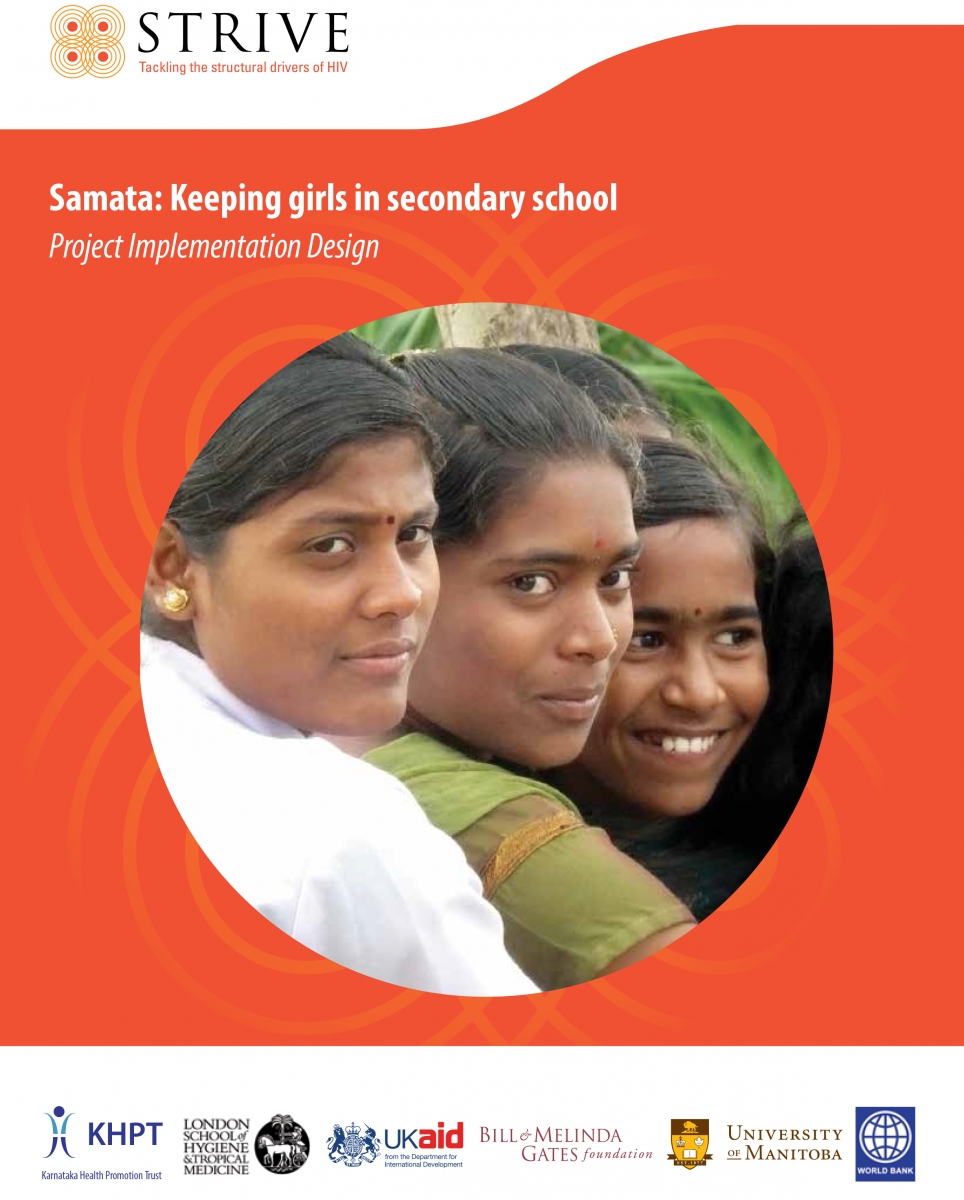A vivid, well illustrated and accessible publication sets out the research rationale and implementation plans for Samata, a project to reduce HIV risk among adolescent girls by increasing their rates of secondary school enrolment and completion.
Structural barriers cut short the education of many adolescent girls belonging to scheduled caste and scheduled tribe families in northern Karnataka, India. The Karnataka Health Promotion Trust (KHPT) is implementing a multi-level intervention, Samata, to address these barriers in the districts of Bijapur and Bagalkot. With the London School of Hygiene and Tropical Medicine (LSHTM) and through STRIVE, KHPT is evaluating the impact of Samata as a whole and of its individual components.
This comprehensive design document:
- reviews the evidence for the association between HIV risk and girls’ access to secondary education
- presents and explains Samata’s theory of change
- details the project’s intervention framework and steps
The Samata process and rationale are also summarised in:
- a brochure about the programme
- a poster showing the road to improved health and lives for girls through education




